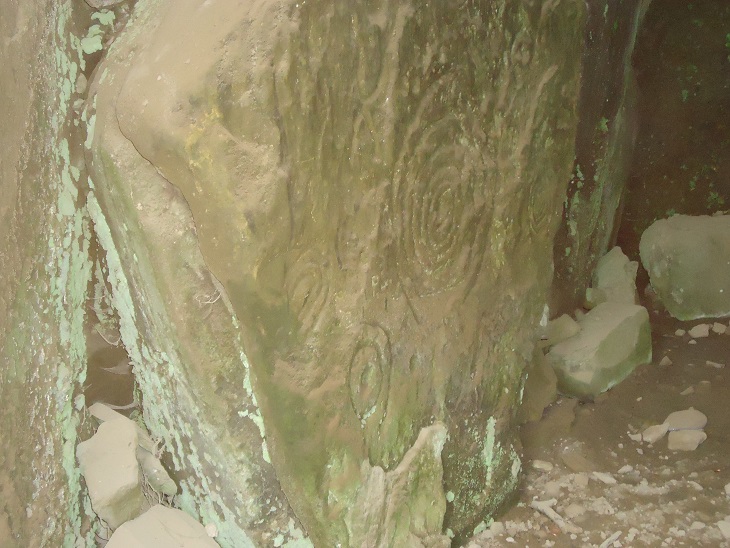
I’m currently in the process of writing a section in the third book of the Fionn mac Cumhal series (The Adversary) which deals with a Neolithic passage grave and I thought I’d share two photos from a research trip I did back home about two years ago. These show what is probably the most famous of Irish passage grave outside of those found at Brú na Bóinne (Newgrange) – that is, Dumha na nGiall (in English, the Mound of the Hostages) at Tara.
This particular passage grave is estimated to date back to about 3400 B.C. In other words, it was already almost three thousand years old by the time the Celts wandered over to Ireland from the Continent (about 500 B.C.). Like many of the other passage tombs, the alignment allows the morning sun to shine down the passageway twice a year to illuminate the internal chamber. Excavations carried out between 1955 and 1959, found more than 200 cremated or inhumed burials (often placed in upturned earthenware urns with burial gifts).
It really is an impressive piece of work and astounding to consider that it’s still in such good condition almost 5000 years later. Naturally however, despite such proof from the potential of human achievement, it’s also important to consider the more idiotic side to humanity as well. The most famous of these at Tara occurred between 1899 and 1902 when Dumha na nGiall was almost destroyed by a group known as the ‘British Israelists’. Convinced that the Irish were one of the Lost Tribes of Israel (yes, that is hard to believe!!) and that the Hill of Tara contained the Ark of the Covenant.
That such crazed extremists were allowed to go ahead with their destruction of such a unique national monument says a lot about the times. A big part of the problem, of course, was that many of those involved were members of the British aristocracy and as the English Crown was in control over Ireland at this time, local outrage was pretty much ignored.
There were, of course, many protests. Arthur Griffith carried out a major campaign against the ‘excavations’ with many of the hoi polloi of the day (WB Yeats, George Moore and Douglas Hyde etc.) despite being ordered off-site by armed men and police. The crazed activist Maud Gonne also turned up and created a scene by lighting a bonfire and singing “A nation once again” in her very genteel English accent (the early 1900s were certainly a wild time in Ireland). Many people believe the destruction to the site of Tara was one of the many national indignities that went on to spur the subsequent rebellion in 1916.
Two nights ago, I was looking at a television report where a bunch of Islamic State of Iraq and Syria (ISIS) thugs were smashing up a beautiful 2700 year old monument in the famed ancient Assyrian capital of Khorsabad. As I watched the inbred with the sledgehammer smashing the ancient statue into smithereens, it struck me that as a species, human beings are never going to evolve unless they learn from their past mistakes and escape the destructive cycles of repetition.
5000 years on, and it seems as though we’re still just spinning.




